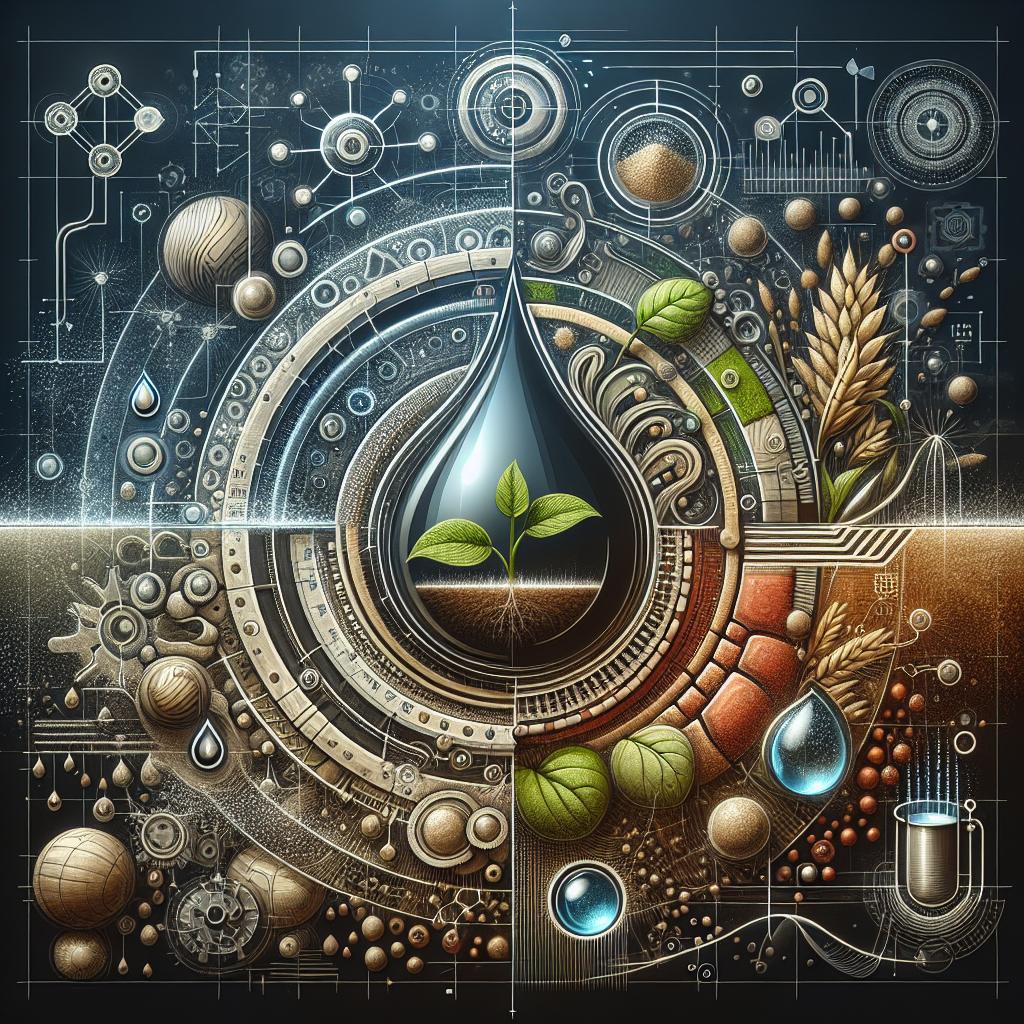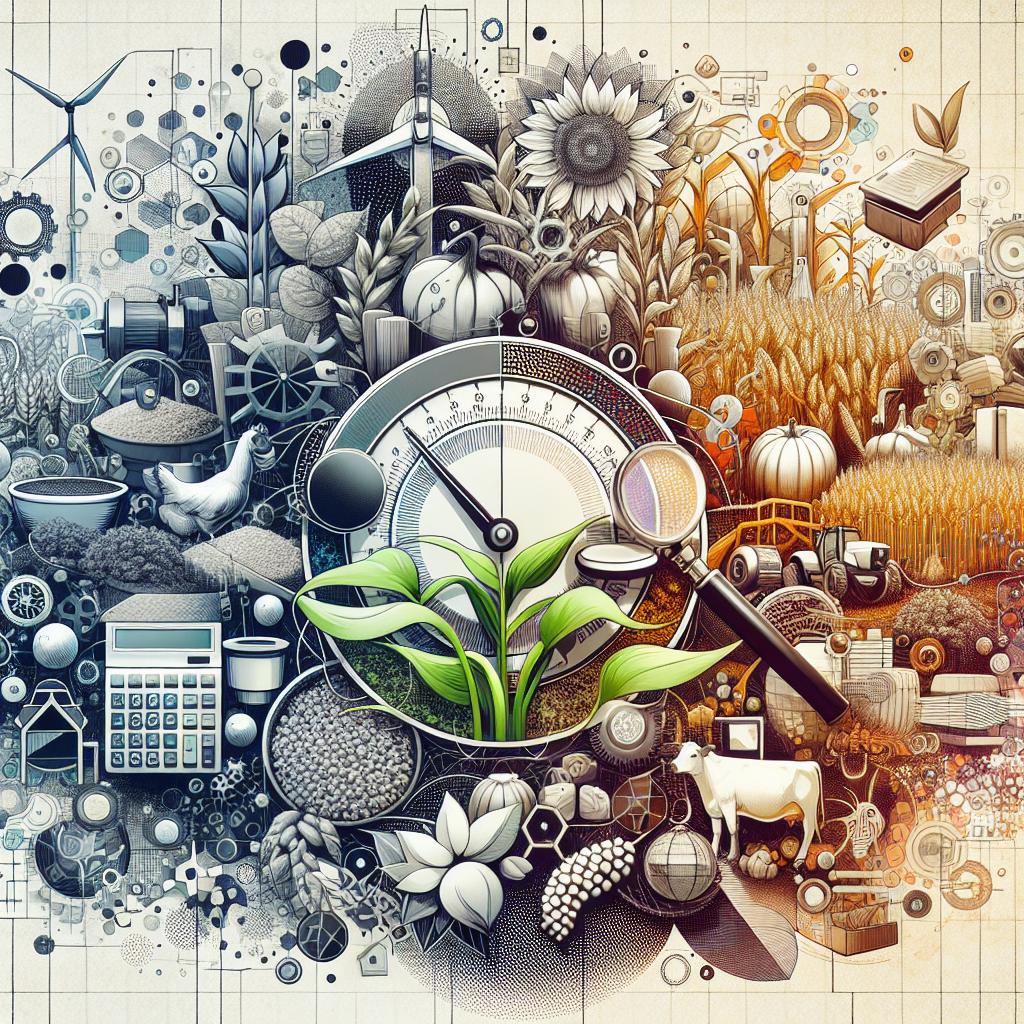This post may contain affiliate links which means I may receive a commission for purchases made through links. Learn more on my Private Policy page.
Choosing the Right Distribution Method for Your Farm Irrigation: A Fresh Approach to Nurturing Your Crop Dreams
Welcome to the verdant world of farming, where every drop of water is a promise of life adn every choice you make can cultivate success! Whether you’re tenderly tending to a thriving market garden or nurturing the next generation of corn, lettuce, or berries, the method you choose for distributing water is as crucial as the seeds you sow. Irrigation may not be the most glamorous aspect of farming,but it’s certainly one of the most vital.In this article, we’ll explore the ins and outs of irrigation distribution methods, demystifying everything from the traditional to the cutting-edge. Join us on this journey as we uncover which approach is best suited to your unique landscape, water supply, and crop goals. Get ready to grow not just your crops but also your understanding of how the right watering system can nourish your dreams into reality! With a sprinkle of knowledge and a dash of creativity, we’re hear to help you find the perfect fit for your farm’s needs. So grab your boots, roll up your sleeves, and let’s dive in!
Understanding Your Crop Needs for Optimal Irrigation
To ensure your crops receive the precise amount of moisture they need, it’s essential to consider various factors unique to your farm. Each crop type has specific water requirements influenced by their growth stages,local climate,and soil type.Understanding these elements can lead to more effective irrigation practices. Key considerations include:
- Crop Type: Different crops have varying water needs. As an example, deep-rooted crops like corn may thrive on deeper watering, while shallow-rooted crops like lettuce benefit from more frequent, light watering.
- Growth Phases: Seedlings may require more frequent irrigation compared to mature plants that can withstand slightly drier conditions.
- Soil Characteristics: Sandy soils drain quickly, necessitating more frequent watering, whereas clay soils retain moisture longer, requiring less frequent applications.
- Weather Conditions: Seasonal changes and local weather patterns can drastically affect moisture needs. Regular adjustments to your irrigation schedule ensure crops receive sufficient water.
To facilitate optimal irrigation management, consider employing a specialized irrigation schedule based on a blend of these factors.Employing tools like a crop water requirement table can help you visualize and track the needs of multiple crops, streamlining your irrigation setups. Below is a simple table indicating average daily water needs for various crops:
| Crop | Water Requirement (inches/day) |
|---|---|
| Corn | 0.25 – 0.5 |
| Lettuce | 0.15 – 0.3 |
| Tomatoes | 0.20 – 0.45 |
| Potatoes | 0.25 – 0.40 |

Exploring Distribution Methods: From Drip to Sprinklers
When it comes to choosing the right method for irrigating your farm, understanding the nuances of various distribution techniques is essential. Each approach has its own strengths and weaknesses, and selecting the ideal system can significantly impact both water conservation and crop yield. Drip irrigation, for example, delivers water directly to the plant roots through a network of tubing and emitters, minimizing waste and maximizing efficiency. This method is especially beneficial for high-value crops and hilly terrains where traditional methods might fail to deliver consistent moisture levels.
On the other hand, sprinkler systems offer flexibility for large fields by simulating rainfall, making them suitable for a variety of soil types and crop varieties. They can be stationary or mobile, allowing for fast adjustments based on your farm’s changing needs. To help you visualize the differences between these methods, consider the following comparison:
| Method | Advantages | Disadvantages |
|---|---|---|
| Drip |
|
|
| Sprinkler |
|
|

Evaluating Cost and Efficiency for Your Farm Setup
When considering the optimal setup for your irrigation system, weighing cost against efficiency is crucial. Investment decisions should factor in not only the initial capital required but also the long-term savings and performance. Key aspects to analyze include:
- Initial Costs: Equipment, installation, and land preparation.
- Maintenance Expenses: Regular upkeep and repair costs to keep your system running smoothly.
- Water Usage: monitoring how much water your crops actually need versus what is provided.
- Energy Consumption: Understanding the energy costs associated with various irrigation methods.
Another effective strategy is to conduct a cost-benefit analysis on different distribution methods. For instance, comparing traditional surface irrigation to modern drip or sprinkler systems can reveal significant variations in both efficiency and overhead. Below is a simple comparison table to illustrate potential costs and efficiencies:
| Irrigation Method | Initial Cost ($ per acre) | Annual Maintenance Cost ($) | Water Efficiency (%) |
|---|---|---|---|
| Surface irrigation | 1,000 | 150 | 60 |
| Sprinkler System | 1,500 | 200 | 85 |
| Drip Irrigation | 2,000 | 100 | 90 |
Utilizing such a table can definitely help you visualize the trade-offs and identify which method best aligns with your budget and production goals. By staying detailed-oriented, you’ll ensure that your farm’s irrigation system remains both cost-effective and capable of delivering the needed efficiency.

Making the Switch: Tips for Transitioning to a New System
Transitioning to a new irrigation system can feel overwhelming, but a few strategic steps can ease the journey. start by assessing your current irrigation practices and identify the specific goals you want to achieve with the new system. Creating a list of desired outcomes, such as improved efficiency, reduced water usage, or better crop yields, can clarify your vision. Engage your team throughout the transition process—this ensures that everyone understands the changes and feels invested in the new system. A well-informed team can provide insights on potential challenges and help facilitate a smoother switch.
Before implementation, test your new system on a small scale to identify any issues early on. This pilot practice allows you to gather data, make necessary adjustments, and train your staff without the pressure of full deployment. During this testing phase,consider using a checklist to track performance,highlighting key aspects like water distribution uniformity,soil moisture retention,and crop response. Here’s a simple table to monitor your system’s performance metrics:
| Metric | Before Switch | After Pilot |
|---|---|---|
| Water Usage (liters/acre) | 1200 | 900 |
| Crops Yield (kg/acre) | 3000 | 3500 |
| Soil Moisture (%) | 30 | 45 |
Final Thoughts
As you venture into the world of farm irrigation,remember that selecting the right distribution method is like choosing the perfect recipe for a delicious dish. Every farm is unique, brimming with its own quirks, needs, and aspirations. By carefully considering the options—whether it’s drip, sprinkler, or surface irrigation—you’re not just making a decision for today, but sowing seeds for a more productive and lasting tomorrow.
So,take the time to assess your land,understand your crops,and listen to the whispers of your soil. Consult with fellow farmers, seek advice from irrigation experts, and let innovation inspire you. The right distribution method will not only quench the thirst of your plants but also nurture your growth as a farmer.
We hope this journey into the world of irrigation has empowered you with knowledge and confidence. Embrace the art of irrigation with an open heart, and you’ll reap the rewards for seasons to come. Here’s to bountiful harvests and flourishing farms! Happy irrigating! 🌾💧
This post may contain affiliate links which means I may receive a commission for purchases made through links. Learn more on my Private Policy page.

